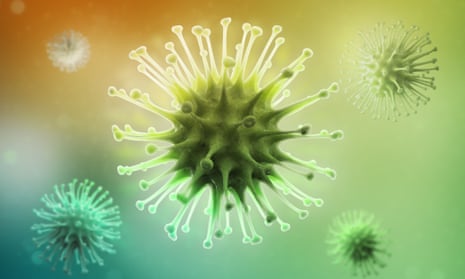I had to travel to a conference on quantum physics yesterday. After arriving at the airport I got into a lift and exited on two floors at the same time. Then I simultaneously got on a plane to New York and to Singapore. My friends greeted me in Singapore. I never did arrive in New York.
This may seem like a pretty convoluted way to earn double air miles, but if I were a photon or an electron, being in two places at once, or in a quantum superposition, would not be so unusual. Quantum physics seems strange to us, since we do not clearly see its influence on the world around us.
However, cutting-edge experimental techniques allow us to look for the effect of quantum physics on bigger and bigger objects. Molecules containing hundreds of atoms have been forced into a quantum superposition of different positions, separated by a hundred times their own diameter. But what if that object is alive? Surely I would know if I were in two places at once?
A recent proposal suggested “piggybacking” a tiny microbe (100 nanometres) on to a slightly less tiny (15 micrometres) aluminium drum, whose motion has been brought to the quantum level. While this experiment is feasible, the separation between the “two places at once” that the bacteria would find itself in is 100m times smaller than the bacterium itself. Quantum physics predicts that I am in a quantum superposition right now, but that I am spread over a distance so tiny that “distance” may not even make sense.
A different route would be to perform the famous double-slit experiment with a living thing. In this experiment an object goes through two slits at the same time (quantum superposition), and then undergoes what is called quantum interference, a phenomena possible due to the wave-particle duality of matter.
As David Deutsch, the Oxford University physicist, puts it: “Demonstrating that something is in different places simultaneously is an excellent way of demonstrating the reality of quantum superpositions. But the demonstration is only conclusive if there’s interference – ideally, if the thing ends up at a single position finally, but that position depends on what happened to it on the way.” Where you find your microbe after the experiment is drastically different if it just goes through a single slit, or if it goes through two slits simultaneously.
What do we stand to learn from putting a living organism into a quantum state? The stakes are very high. One of the biggest mysteries of quantum physics is the process of collapse, which is the transition between the probabilistic quantum world and the world of definite things we see around us. Some believe that the consciousness of living things is the ultimate cause of this transition.
“The idea that consciousness leads to collapse goes back to Eugene Wigner, the Hungarian-American theoretician,” explains Vlatko Vedral, a physicist working in Oxford and Singapore, “The intuition is that being conscious entails being aware of a definitive state of affairs”, since presumably we could never be aware of being in two places at once, “and this is what forces quantum physics to give us a definitive result.”
We could uncover the role of thought and consciousness in physics, specifically whether the thoughts of a thing are enough to affect quantum behaviour. Deutsch believes that “for the experiment to be impressive, the living thing would have to have different thoughts on the two paths through the slits, demonstrating quantum interference between thoughts.” Of course, that experiment isn’t easy. “It is hard to test this idea,” says Vedral, “firstly because we do not really understand consciousness, and secondly because it will be hard in practice to superpose two different states of consciousness and then do the interference to confirm that this indeed happened.” There are many good reasons that we don’t find big things in quantum states, such as their complicated interaction with the environment. Proving that consciousness plays a special role would be an extreme challenge.
We should be optimistic though. We are certainly approaching the technological sophistication to perform quantum experiments with the simplest living things. “It is a thrilling ongoing challenge,” says Markus Arndt, who works on experimental quantum nanophysics in Vienna. “If you count viruses as living, I firmly believe a superposition can be done within a decade. There is a clear technological roadmap. Preparing biomolecules, viruses and bacteria for the harsh realities of experimental quantum physics is difficult enough. To go beyond tiny organisms will be even tougher still.”
Quantum physics is an enigmatic, counter-intuitive theory, but we have never had such a successful and accurate picture of the world. As we begin to technologically exploit quantum effects in ultra-secure communications, super-sensors and computing, we can also hope to learn about our place in reality as living beings.
- Dr James Millen is a researcher at the Vienna Centre for Quantum Technologies, and a lecturer on quantum physics to the public at the Royal Institution of Great Britain.

Comments (…)
Sign in or create your Guardian account to join the discussion